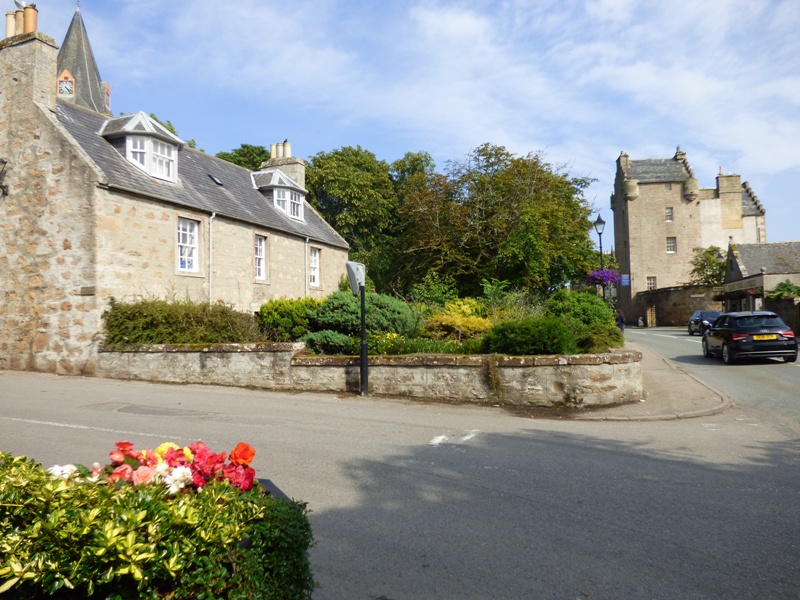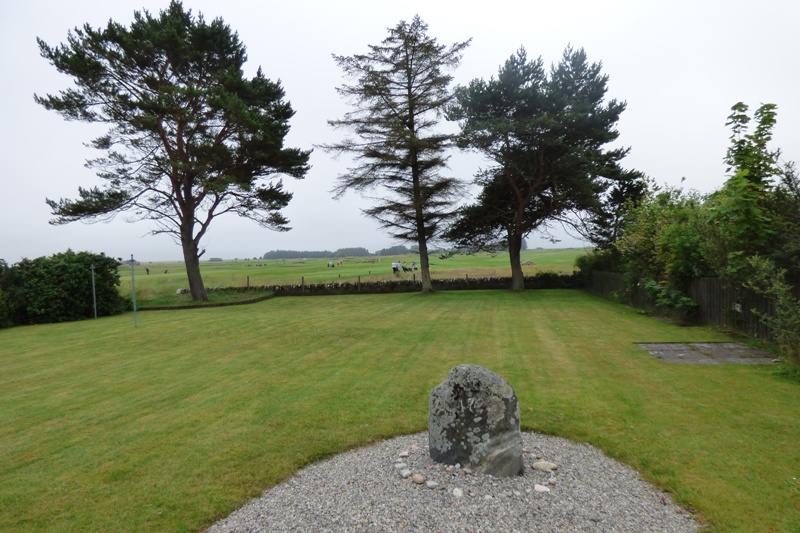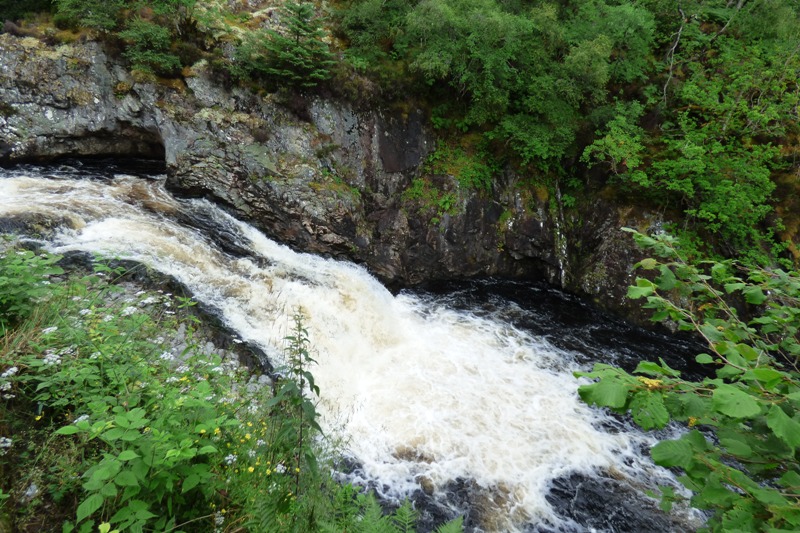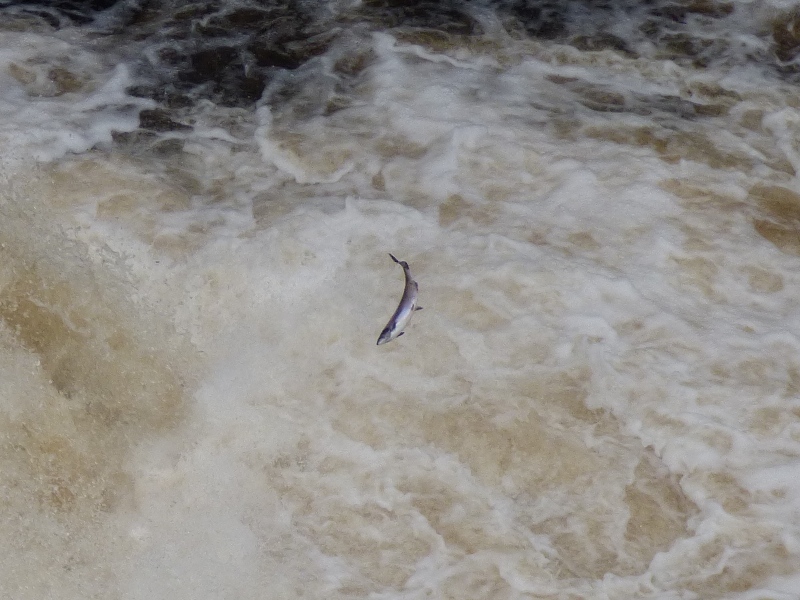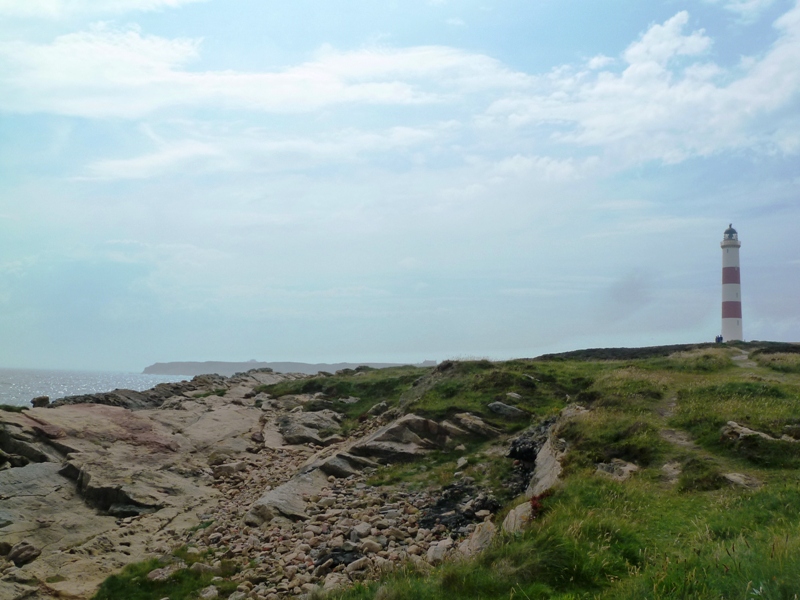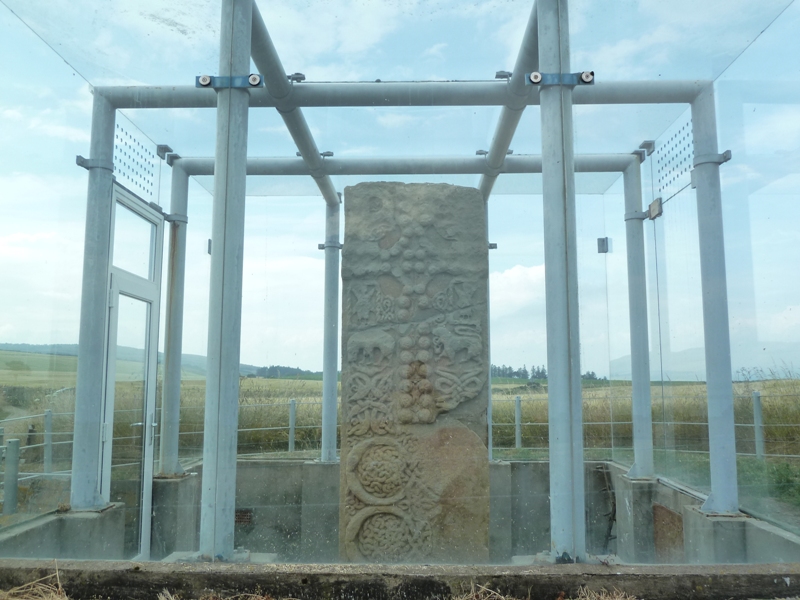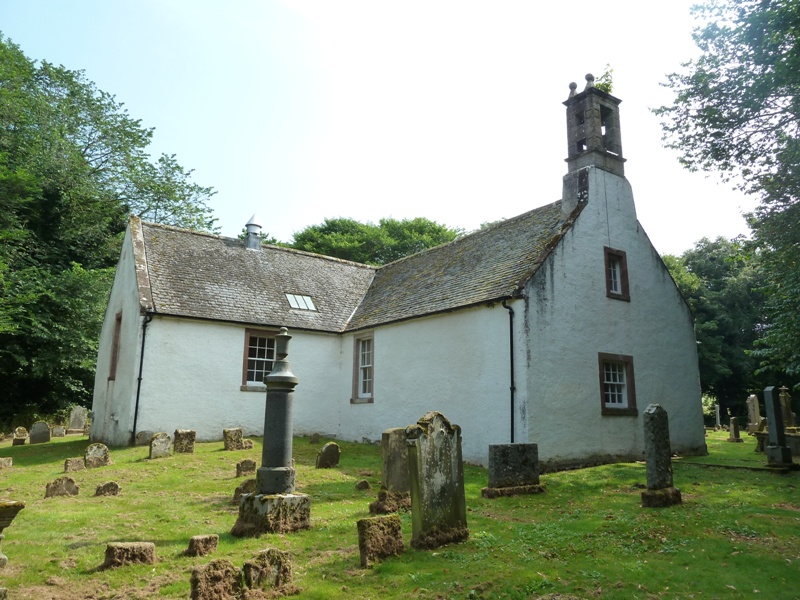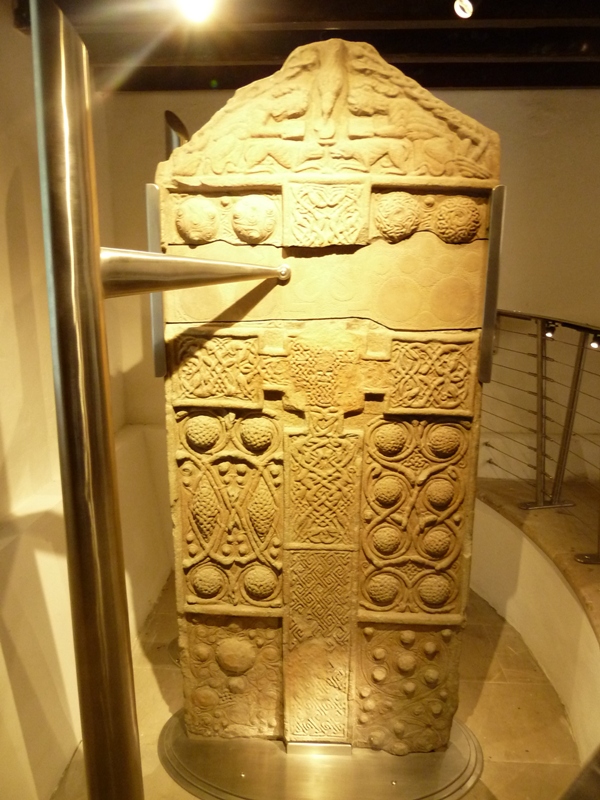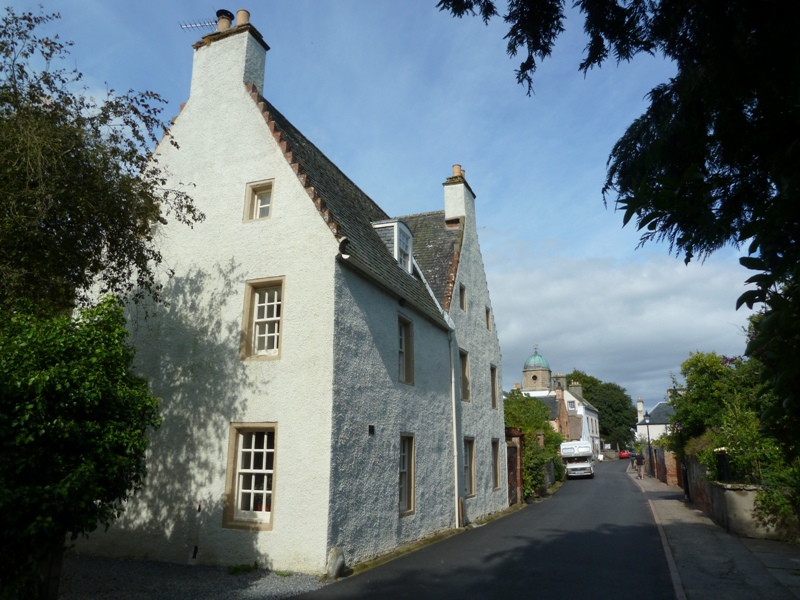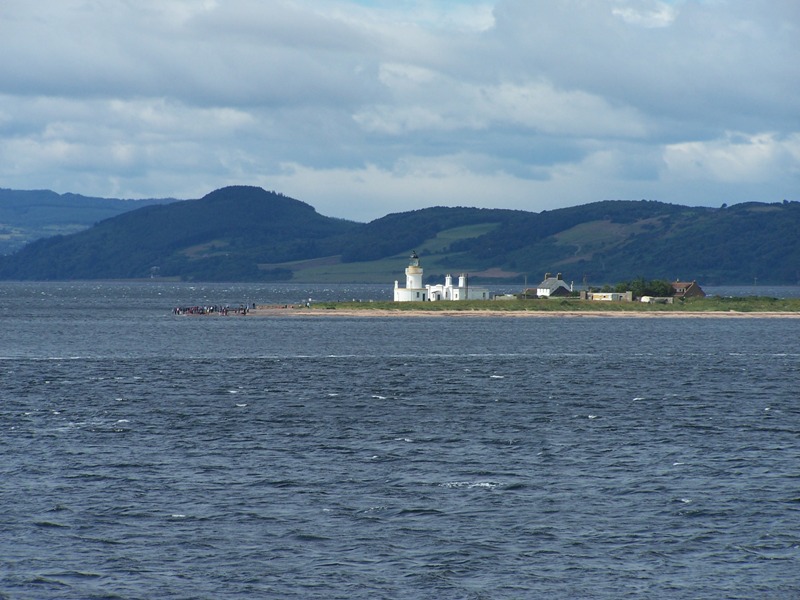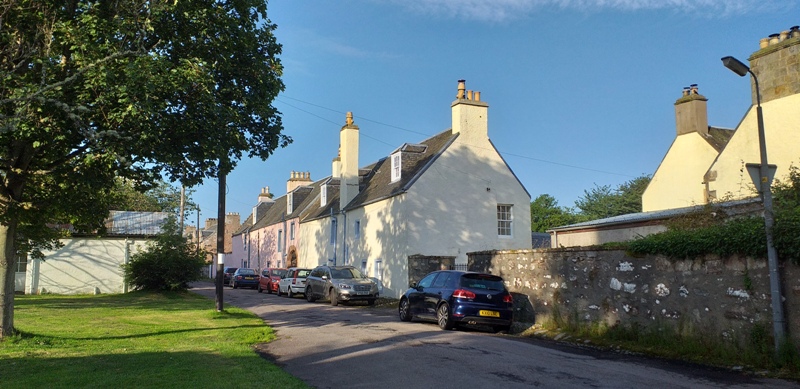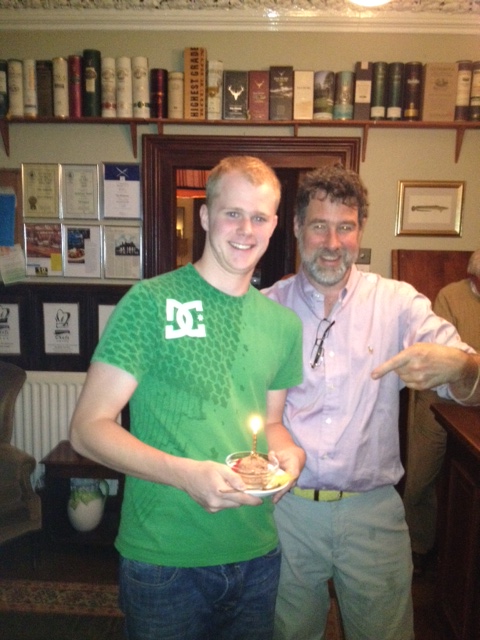North Coast 500 Itinerary Ideas
There’s lots of Blogs about “North Coast 500 things to do”.
I just googled it and found a heap of articles written by Travel bloggers who make a living out of churning out these sorts of articles.
These professional travel bloggers invariably write stuff with a title that goes like “20 Epic Things to do on...” or “The Ultimate Trip Guide to...”
Unfortunately, most of these articles seem to be written by people who have only done the North Coast 500 once. And that means they really haven’t had time to detour from the basic NC500 route.
Our list of what to feature in your North Coast 500 itinerary is going to tell you about places that aren’t so obvious or which require you to wander a bit from the main NC500 route.
We think you’ll thank us for it.
We will also be recommending some Must See places along the NC500 route that are well known, but which needed to be listed as they really do merit a visit.
So this is our list of places in the order they appear if driving the NC500 route in a clockwise direction starting from Inverness.
All of these places and directions on how to find them, plus lots more, are detailed in our North Coast 500 tour plan.
1. Little Garve Bridge -
First up is a scenic and atmospheric old bridge just a few miles further along the A835 from the Rogie Falls which is one of the places that lots of NC500 blogs will tell you to visit. Little Garve bridge gets overlooked as the turnoff is just a few hundred metres beyond the junction where most NC500 tourists turn to head west towards Achnasheen and then Applecross.
The great thing with the picnic spot at Garve Bridge is that you will most likely have it all to yourselves, whereas the Rogie Falls is so popular that you often have to wait for a turn to take a picture at the best viewpoints. We’d admit that the suspension bridge over the Rogie Falls is a bit more exhilarating to cross, but Garvie Bridge has stood above the rapids of the Black Water since 1762 and has that magic sense of time stood still.
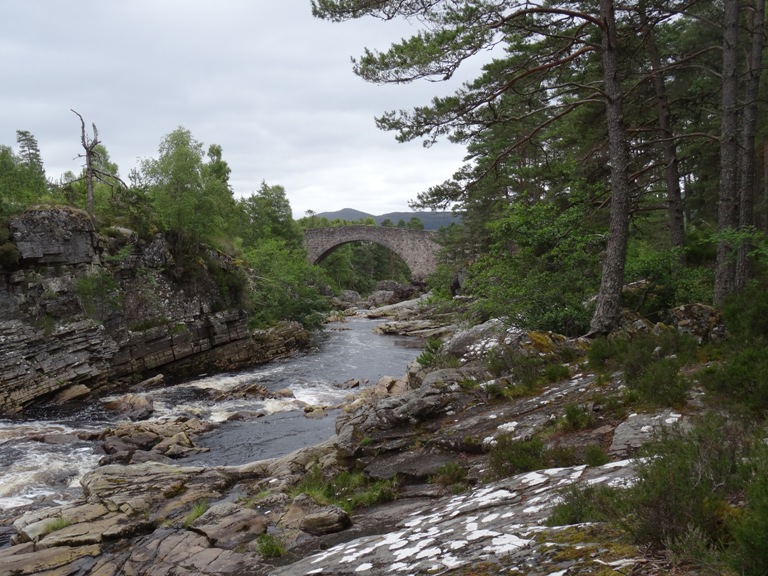
2. Pulpit Rock at Am Ploc -
The NC500 passes through Glen Torridon which is arguably the most scenic glen in Scotland. Lots of tourists will stop in Torridon village as a journey break on the NC500, but we wonder how many ever discover the open-air Church on the shores of Loch Torridon.
I first visited this site when I was working on a conservation project in Torridon restoring footpaths of Beinn Alligin and Beinn Eighe. We were staying in an old farmhouse at the head of Loch Torridon and the quickest way to the village shop was to walk along the shoreline which brought you to the natural amphitheatre of the church.
The rocks have formed the perfect setting for a place of worship as there is even a “pulpit” created by a split in a rockface. The locals added “pews” in the form of suitably shaped stones and I’m told that a tarpaulin was erected over the seating area to provide some degree of shelter from the elements. Unfortunately, the congregation would have had no protection from the midges which can be vicious in Glen Torridon.
This site started as a place of worship around 1843 when the Free Church of Scotland became a breakaway movement and had no access to church buildings. They thus adopted places like Am Ploc for open-air services. Surprisingly, services continued to be held here on occasions even into the 1980’s.
3. Beinn Alligin -
I mentioned earlier that I did some footpath work on Beinn Alligin so it is a mountain that I am very familiar with. It’s a great climb as the mountain stands on its own at the west end of Glen Torridon so the summit gives you wonderful views that take in the Applecross Peninsula, the North of Skye and the Beinn Eighe nature reserve.
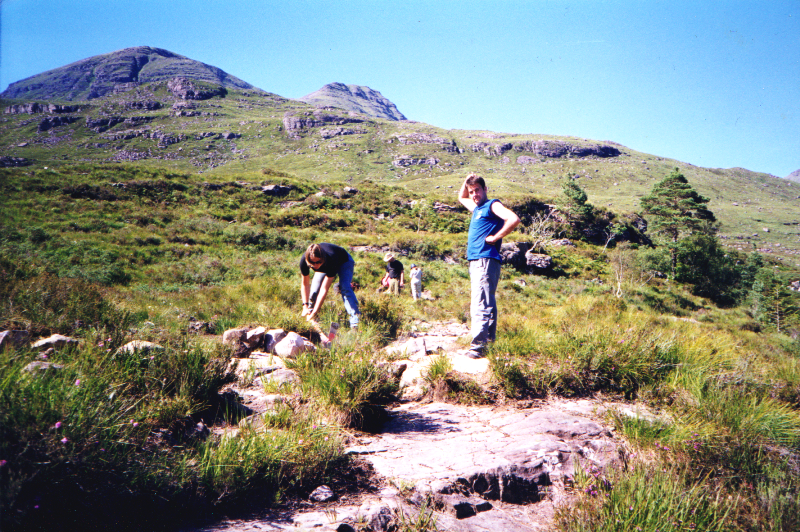
Of course, there are lots of great summits to conquer in the Torridon area, but Beinn Alligin is a mountain that has different faces, literally. Approach it from the “Horns” and you have a challenging and a little bit scary ridge walk.
If you want a good workout, but without the fear of falling to your death, you can follow the path that zig-zags up the southwest side of Tom na Gruagaich to arrive on a high mountain plateau. You then pick up a ridge walk to get to the 986 metre high summit of Sgurr Mhor, but to get there you first have to skirt around the impressive gully of Eag Dubh.
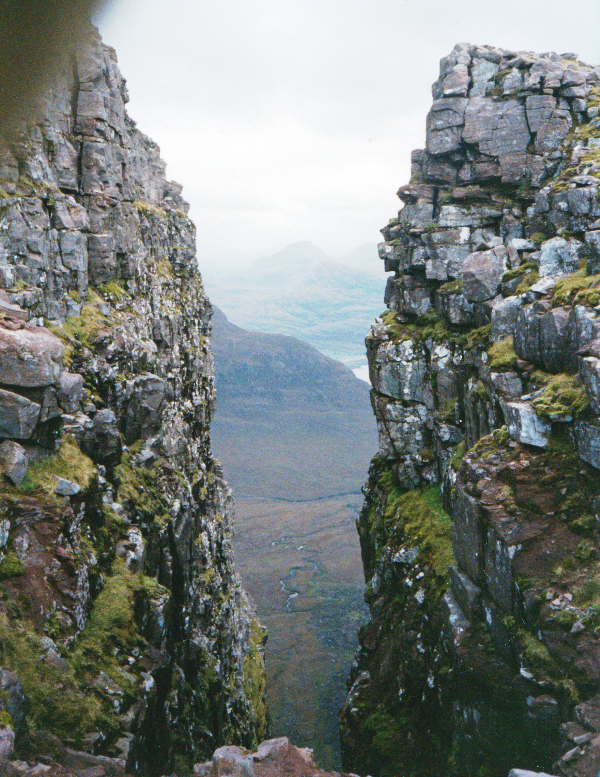
If you aren’t happy with heights, we’d suggest you do the ridge walk going clockwise as that allows you to reach the summit and then backtrack if you decide the “Horns of Alligin” are too daunting to traverse. The “horns” don’t really require any rock scrambling skills, but it does feel a bit exposed so it tests your head for heights.
Doing the complete circuit should take around 5 - 6 hours so you need to set aside a full day of your NC500 itinerary for an ascent of Beinn Alligin.
4. Diabaig -
Whilst at the car park for Beinn Alligin, you’ve already driven a third of the way to Diabaig so you may just wish to continue all the way to the end of the road to see the shipwrecked fishing boat in this sheltered bay. There’s also the great Gille Brighde restaurant here, but do check that it’s open as it closes in winter and only opens for dinner on Thursdays, Fridays, and Saturdays.
Diabaig might look vaguely familiar to you as it was here that they filmed the rather corny “Loch Ness” movie in which Ted Danson found the Loch Ness monster in Loch Torridon. This would, of course, explain why so few people have seen the monster. We’ve all been looking in completely the wrong place.
5. Glas Leitir Trail and Loch Maree Viewpoint -
Traveling west from Kinlochewe on the A832, you soon pass the Coile na Glas Leitir car park. This is a nice place to stop for a picnic as it is one of the few places along the road where you have easy access to the shores of Loch Maree.
But the reason we mention this in our list of what not to miss on the NC500 is the lovely woodland walk on the Glas Leitir trails. Glas Leitir translates from Gaelic as the “green wide ridge”. It is certainly a walk through lots of vegetation and at lower levels, you find ferns and blueberry bushes growing in the shade of mature Scot’s Pine trees.
This area was heavily deforested during WW2, but after the war, they created a nature reserve to protect the land and give the indigenous Scot’s Pine trees a chance to re-establish. Fortunately, they have succeeded and the BeinnEighe Nature Reserve is one of the loveliest wild woodlands in the Highlands.
From the car park, you can follow a beautifully made path that climbs to a viewpoint that looks out over Loch Maree towards the distinctive Slioch mountain. The path can be done in ~1.5 hours or less.
6. Badachro Inn -
Before you get to Gairloch there is a side road on your left that leads to the Badachro Inn. This is my favourite pub in the Highlands and it is at the heart of a lovely little community where we have several good friends. The pub has exactly the sort of cozy traditional atmosphere that makes you want to come back again and again.
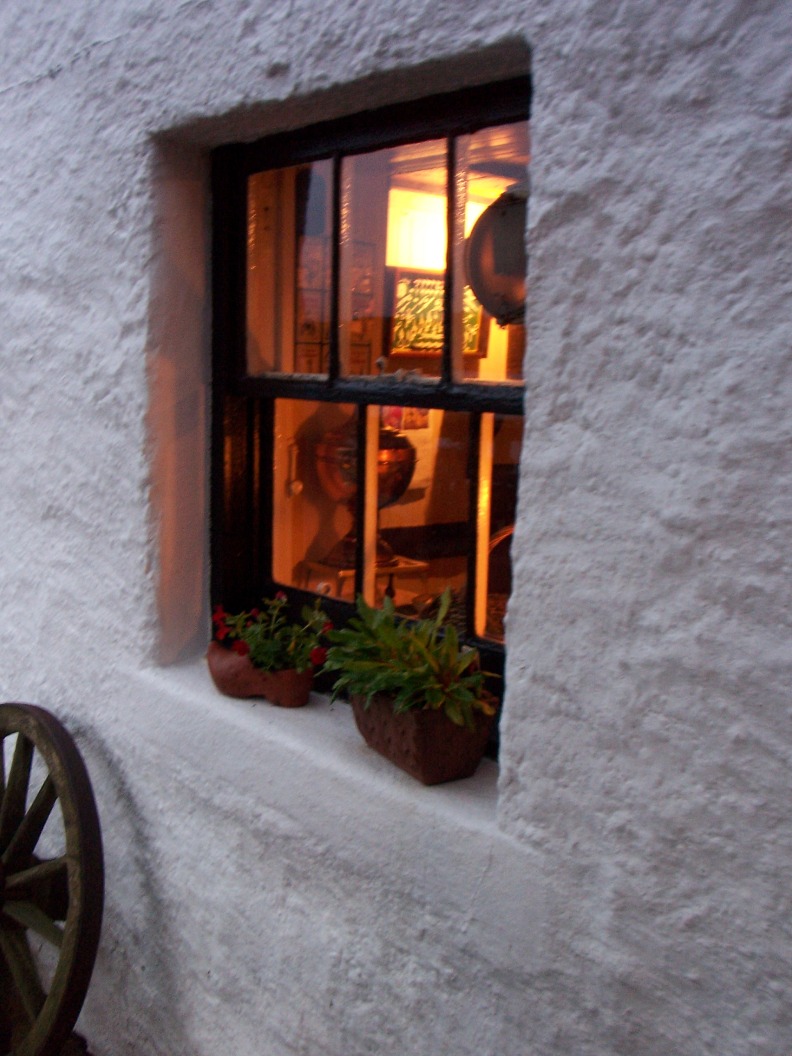
7. Inverewe Gardens -
This is an obvious one to mention so we aren’t going to go over it again here and instead will point you to our information sheet where you can get all the details.
8. Mellon Udrigle Beach -
There are lots of great beaches along this route and we mention several more below. We aren’t going to list all of the beaches on the NC500 route, just some of the good ones that you might otherwise miss.
Mellon Udrigle is a 10-minute detour from the village of Laide and is a beach that we love because of its white sands and the views across the sea to the Summer Isles and the distant mountains of the Inverpollaidh Nature Reserve.
There are quite a few places in the Highland called “Mellon X”. It is an anglicization of the Gaelic word Meall or Meallan meaning a small hill. The Udrigle bit is thought to be of Norse origin and is either a person’s name or a derivation of the Norse word “utargill” which is a gully.
9. Stac Pollaidh -
About a 30 minute drive from Ullapool, this is a very popular little mountain to climb. You can easily climb up to the ridge between its east and west summits in 90 minutes, but the final ascent to the highest point of the western summit is a challenge as it involves a scary scramble over a large outcrop with sheer drops. Unless you are confident, we’d advise you to just be content with the views from the slightly lower eastern summit.
You really don’t need to risk your neck getting to the western summit as the views are magnificent all the way up and it is the landscape looking out to Cul Mor, Suilven and Canisp that make this small hill really memorable.
We would warn you that it is quite a busy place in Summer and the car park at the start of the ascent is only able to take 25 - 30 cars so an early start is advisable to beat the crowds. If you start the climb at 9:30am, you should be back at your car by lunchtime so Stac Pollaidh can be done in a half-day.
10. Drive through Inverpolly Nature Reserve via Inverkirkaig -
this single track road is not part of the NC500 which is a good thing as it saves this corner of Scotland from the tourist crowds and congestion that plagues some sections of the NC500.
It is a lovely drive worth doing for the views it provides of the peaks of Stac Pollaidh and Suilven. In saying that, it is not a good road if you are nervous about driving on single track roads. There are some very narrow sections hemmed in by stone walls and rocks so it does need to be driven with care.
When you get to Inverkirkaig, we would recommend that you head up to the old bookshop / giftshop and cafe (it is currently up for sale so might not be open much longer). The reason we suggest this stop is that the shop is located at a spot which has great views across to the distinctive Suilven mountain that rises like an iceberg on a sea of moorland.
11. Culaig Woods -
Maybe not an essential or particularly breathtaking experience on the NC500, but this community woodland on the outskirts of Lochinver is a good place for kids to get out and explore. The woodland trails include sculptures and mysteries that kids will enjoy discovering. For example, there are giant spiders hanging in the trees, a bridge guarded by a troll, a tree of wishes and some giant dragonflies. There are also meant to be free-roaming pigs in the woods, but we’ve never seen them.
12. Cullen Skink at An Cala -
The fact that I’m singling out one dish at this informal little cafe/restaurant in Lochinver is in no way meant as a criticism of the rest of their menu. I benchmark Scottish restaurants by the way they make a bowl of Cullen Skink, which if you don’t know is a traditional Scottish soup made with smoked haddock, potatoes, onion or leek, milk and or cream. There are a few variations on that recipe but those are the key elements.
It’s a soup that, when it’s done right, can be one of the most satisfying culinary experiences you’ll ever know. I’m happy to say that An Cala’s kitchen crew pass the test with flying colours.
.jpg)
13. Clachtoll Beach -
Most guides that you’ll find about the NC500 will rave about Achmelvich beach and it is a lovely beach. But we’re not recommending it here for 2 reasons.
First of all the road to the beach is a pain to drive as it has too few passing places and too many blind bends. There is one bend in particular that is very hard to get past because there are too many cars on the road so you keep driving up to it and then having to reverse back due to oncoming cars that refuse to reverse to their passing place. In July 2019, it took us 5 attempts to get past this bend as the beach is so popular.
And that leads us to the next problem. Achmelvich beach is beside a large campsite and the beach gets very busy on sunny summer days.
So our advice is to drive a few miles further north to Clachtoll beach. It is by no means a secret beach and it has a campsite next door to it as well. But Clachtoll beach doesn’t get to be quite as crowded feeling as Achmelvich and its setting is lovely. It is also next to the unusual “Split Rock” which looks like a ship that has broken its back on a rocky reef.
14. Choc-o-latte -
Choc-o-latte is a little bit of Belgian chocolate know-how brought to the Highlands by Philip and Sophie. Philip & Sophie holidayed in the Highlands for many years before eventually taking the plunge to live here full time. The cafe is a wonderfully homely affair in their little cottage which looks out across Assynt to the peaks of Suilven and Canisp.
It isn’t the easiest place to find, but if you follow signposts to Stoer Lighthouse you will stumble across this lovely little cafe with a view.
15. Clashnessie Waterfall -
If you follow the B869 from Lochinver to Kylesku you will pass within a few hundred metres of the Clashnessie Waterfall, but you will most likely pass buy and not even see it. The waterfall is only 15 metres high, but you can walk right up to the base of it and it feels quite spectacular when you get up that close. A bit like one of those waterfalls you expect to see in a shampoo commercial.
Although it is easy to miss the signs and the path is a bit haphazard and muddy, you can walk to and from the Clashnessie falls in ~30 mins. Just be sure to wear waterproof boots.
16. Kylesku Hotel -
Not a particular secret, but worth a mention as we had our best dinner of 2019 here. Wherever possible, the food is locally sourced and you can really taste this in the fish dishes. It’s not cheap, but it is worth every penny and it isn’t in the silly expensive price range like the Three Chimneys on Skye.
We also have to praise the restaurant for the friendliness of the staff, speed of service and the wonderful views. Well worth a visit if you have a special occasion to celebrate.
.jpg)
17. Sandwood Bay -
Again, there’s no big secret about Sandwod Bay, but the 2 hour hike to get to it means that not that many folk will do it on their NC500 tour. It is also such a wonderful beach when you get there that you really have to allow for another 2 hours just lolling around on the beach, having a picnic and taking in the views.
If you have energy after the hike, which is really not that bad as there is a good path and the gradients are gentle, you should first head to the hill at the southern end of the beach. From here you get the best vantage point for pictures and you can get a good view of the sea stack called Am Buachaille (Gaelic for “the Herdsman”).
Behind the beach there is a small loch and the ruins of an old cottage. The cottage is now an empty shell, but some 50 years ago it still had a roof and was used as a shelter by walkers staying overnight at Sandwood Bay. many of these visitors regretted staying the night in the cottage as they returned with tales of terrifying encounters with an unseen force that shook the house as if in an earthquake.
Fitting Sandwood Bay into your NC500 tour would really require you to set aside a full day just for this excursion.
18. Achfary -
If you detour inland from the NC500 route at Laxford Bridge you will, after 10 mins driving, arrive at the pretty little village of Achfary. The village was established to provide housing for the workers on the Duke of Westminster’s estate in the late 1800’s. The most unusual feature of the village is an old black and white painted telephone box that is actually now used for a defibrillator (we wonder how many folk have heart attacks in this place).
The other unusual feature of the village is the attractive wood-clad village hall which looks more like it would belong in some Bavarian or maybe Norwegian setting.
19 . Smoo Cave -
An obvious attraction to include in your North Coast 500 itinerary so we are just going to point you to our information sheet where you can get the essential details.
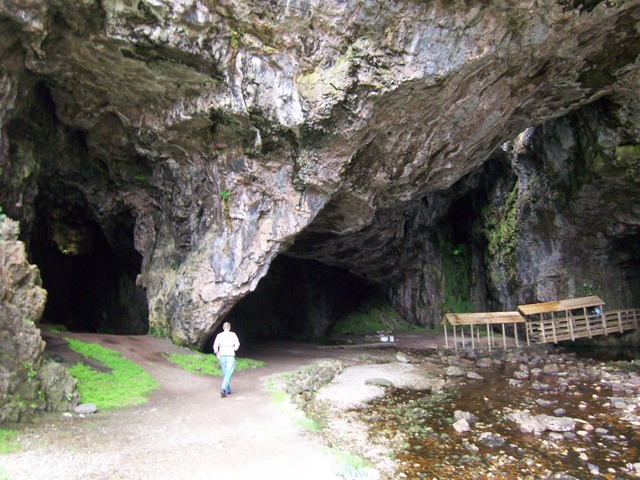
20. Lotte Glob workshop -
Travel a few miles east of Durness and you arrive at the shores of Loch Eriboll. It’s a moody place with a bleak beauty. The changing colours of the sky and the rugged landscape are echoed in the artworks of Lott Glob who has her workshop here. The workshop is only open at limited times, but if you call in advance you can arrange a private appointment.
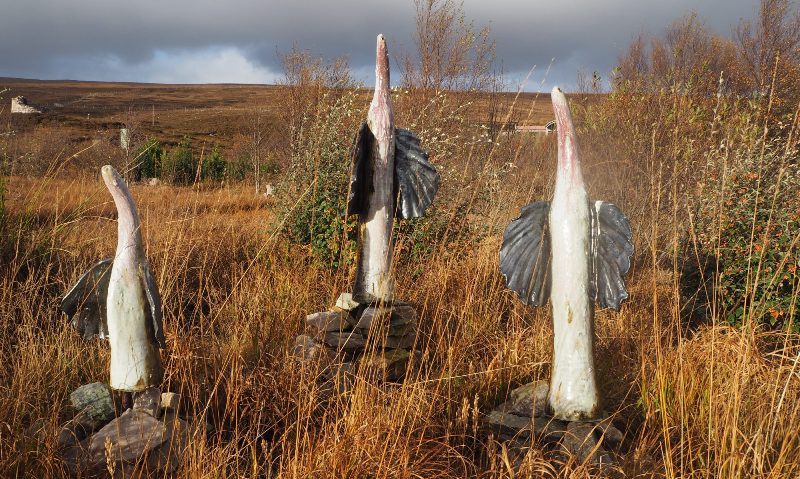
21. Dunnet Head -
Most folk make a beeline for John o Groats in the wrong belief that it is the most northerly point of the Scottish mainland, but nearby Dunnet Head is the correct place to head if you want to go as far north as possible in Scotland without catching a boat.
There are impressive 300 foot high cliffs at Dunnet Head and a stubby, but attractive little lighthouse. If you climb the small hill behind the lighthouse you will find a view point with one of those landmark indicators which tells you what the landmarks are on the horizon. On a clear day you can see over to Orkney.
22. Grey Cairns of Camster -
If you are visiting the Whaligoe Steps on the A99, you might also wish to consider the small detour north from the A99 at Occumster to visit the Grey Cairns of Camster. The Grey Cairns are one of the most overlooked archaeological sights in Scotland and we are sure they would be a major tourist attraction if they were on Orkney.
It really is quite amazing that such a large and intact Neolithic burial chamber is not firmly on everyone’s list of NC500 “Must Sees”, but the cairns are all the better for the lack of other visitors and we probably shouldn’t be telling you about them. Of course, the other reason that they are maybe not visited so much is that they are rather spooky and you do need to take a good torch with you.
23. Dunrobin Castle -
Another obvious but essential attraction to include in any North Coast 500 itinerary. We’ve already covered this stunning castle in detail on our website in the “Places to Visit” pages.
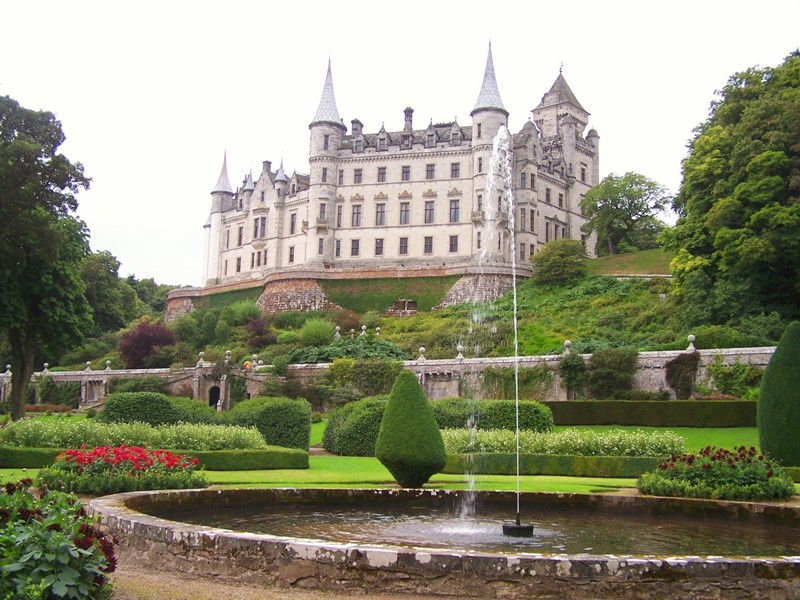
24. Dornoch -
One of the prettiest little towns in the Highlands, Dornoch is well worth a stop for lots of different reasons.
If you are a golfer there is the excellent golf course where, it is claimed, the game was first played in 1616. Of course, the current Royal Dornoch clubhouse (pictured below) and course are not that old, but this is a club with a history to be proud of.
The history of Dornoch isn’t just centered on the golf course. At the heart of the town, there is a “castle” (now a hotel) and a sturdy little cathedral that dates from the 13th century. The cathedral was extensively destroyed after a feud between the Murray and Mackay Clans which resulted in the Mackays torching the cathedral in 1570. It then lay in ruins until it was extensively rebuilt in the 1830’s.
We could happily live in Dornoch. It’s got lovely shops, a great hotel with a cozy bar, a top-class restaurant, lots of pretty houses, a wonderful beach and is a pleasure to explore on a sunny day in summer.
The visitor experience of Dornoch is enhanced by the liberal provision of information boards that explain the history of the town and recount some of its more noteworthy events.
One of the most unusual of these events was the death of Janet Horne who was the last person in Scotland to be executed for witchcraft. In the front garden of the last cottage on Carnaig Street there is a memorial stone that marks the spot where poor Janet was burnt alive in a barrel of tar in 1727. It’s hard to reconcile this scenic and peaceful spot with the horrific death that Janet must have suffered.
25. Falls of Shin -
A visit to the Falls of Shin involves adding a significant side leg onto your route. If going from Dornoch to the Falls of Shin and then returning to the A9, you would need to allow for an extra 45 mins / 30 miles of driving plus time for actually visiting the Falls.
The reason you would want to make this detour is to see the salmon fighting their way upstream at this narrow gorge. The best time for witnessing the salmon is late summer/autumn, but the pictures we took here were from a visit in late July.
There is a viewing platform above the falls and it is a great spectator sport with the crowd cheering on the salmon as they valiantly fight their way against the current to get back to their spawning grounds.
Sadly the number of wild salmon in Scottish rivers is dwindling and they are becoming an endangered species. There is a good visitor centre beside the falls with an excellent cafe and some good facilities to keep young children entertained.
26. Tarbat Ness lighthouse -
On the A9 traveling south from Tain, you should see signposts for a sideroad to Portmahomack. Follow the road to its very end and you arrive at Tarbat Ness where you will find a photogenic red and white striped lighthouse that warns shipping away from the rocky headland.
The lighthouse, which is one of the tallest in Scotland, was built in 1830 following a terrible storm in 1826 that caused a large number of shipwrecks along this coast. The information boards at the car park tell you about the wildlife to look out for and they claim that dolphins can be seen offshore but we’ve yet to see any on our visits here.
27. Pictish Trail / Seaboard villages -
We didn’t drag you across to Tarbat Ness just to see a lighthouse, our cunning plan was to guide you away from the busy A9 to follow a scenic coastal route called the Pictish Trail.
The route takes you through Shandwick, Balintore and Hilton of Cadboll, a group of villages collectively known as the “Seaboard Villages”. The villages in themselves are not essential places to visit, but they have examples of Pictish stones which display intricate carving and distinctive designs.
Something else to look out for in the Seaboard villages is the 5 modern artworks that represent elements of the villages history. The five sculptures are titled; Folklore, Fishing, Fortitude, Four Corners of the Earth and Faith. The most striking is Folklore which is represented by the statue of a mermaid on a large boulder on the shorefront of Balintore. It’s a striking sculpture and looks especially attractive when the tides comes in.
For me, the most interesting stone on this Pictish Trail is the one to be found in Old Nigg Church.
This stone is displayed within the church building and it represents an interesting period in Scottish history when Pictish culture started to be absorbed into Christian beliefs. As a result, the stone combines symbology from both cultures and is a beautiful piece of artwork that deserves much greater recognition.
28. Cromarty -
If you do take time to visit Nigg Old Church, you are just a few minutes drive from the embarkation point for the little car ferry that crosses the Cromarty Firth to the historic little town of Cromarty.
We need to warn you that it is a very small ferry (only 2 cars at a time) and it only operates from June to mid September.
Assuming you don’t have to wait too long to get on board, the Nigg ferry can get you to Cromarty in just a few minutes and save you a 1 hour / 37 mile drive around the Cromarty Firth.
Even if you can’t get the ferry, we highly recommend a visit to Cromarty. It’s another wonderfully pretty little town and we’d have to rate it as even prettier than Dornoch, but they are both charming in very different ways.
We’ve written in detail about the attractions of Cromarty in a previous blog.
29. Fortrose -
Driving from Cromarty to Inverness will bring you through the little village of Fortrose. Most people that visit Fortrose are heading here to see the dolphins that frequently frolic within sight of the shore at nearby Chanonry Point lighthouse. The dolphins cluster here as it is a bottleneck in the Moray Firth where migrating salmon are easy pickings.
Chanonry Point also appears in history as the place where the famous Scottish soothsayer, the Brahan Seer, was burnt alive in a barrel of tar as a result of offending Lady Seaforth.
.jpg)
What had the Brahan Seer done to anger Lady Seaforth so much? He predicted that Lord Seaforth was having “a bit on the side” during his visit to Paris. Knowing the aristocracy that seems not only likely but pretty much guaranteed. Unfortunately, the Brahan Seer didn’t anticipate the consequences of this prediction.
But there’s more to Fortrose and most visitors seem to overlook the opportunity to explore its quiet back streets where they will find lots of charming old houses and the ruins of a cathedral that would once have been quite impressive.
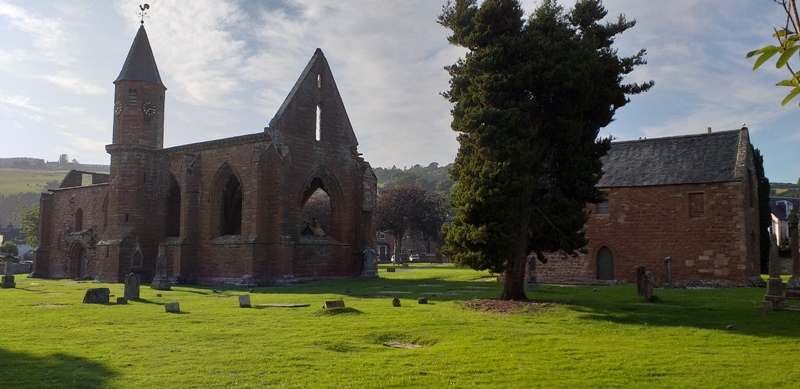
30. Whisky & Dinner at the Anderson Hotel -
There’s another good reason for stopping at Fortrose and that is the Anderson Hotel. This is a quirky establishment run by the immediately likeable and very charismatic Jim Anderson and family.
Jim is an American who has gone native. Jim also has a knowledge of whisky that would embarrass most Scots and his ability to identify whisky by taste is quite legendary.
You can test your tasting skills with The Anderson's whisky menu which is 4 pages long and contains some “expressions” of malts that we have only ever read about in books because they are so rare.
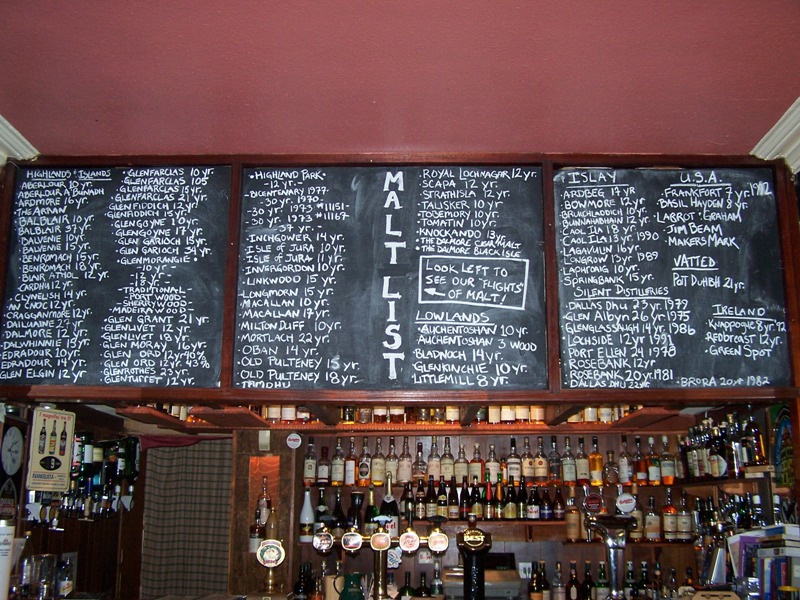
The Anderson hotel is also a great place to stay for dinner so why not plan to celebrate the completion of the North Coast 500 route with some fine dining followed by a digestif selected from the extensive whisky Menu.
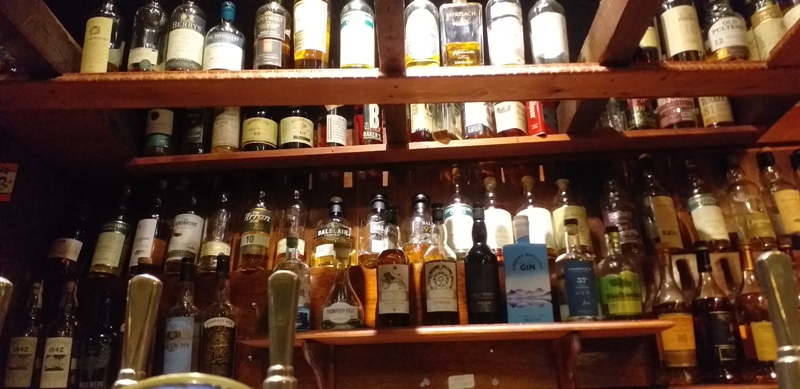
North Coast 500 Route Completed
And that brings us back to Inverness, where you could spend a few more days following the day trip suggestions in our North Coast 500 itinerary.
If you want more information you can watch our video about North Coast 500 things you ought to see.

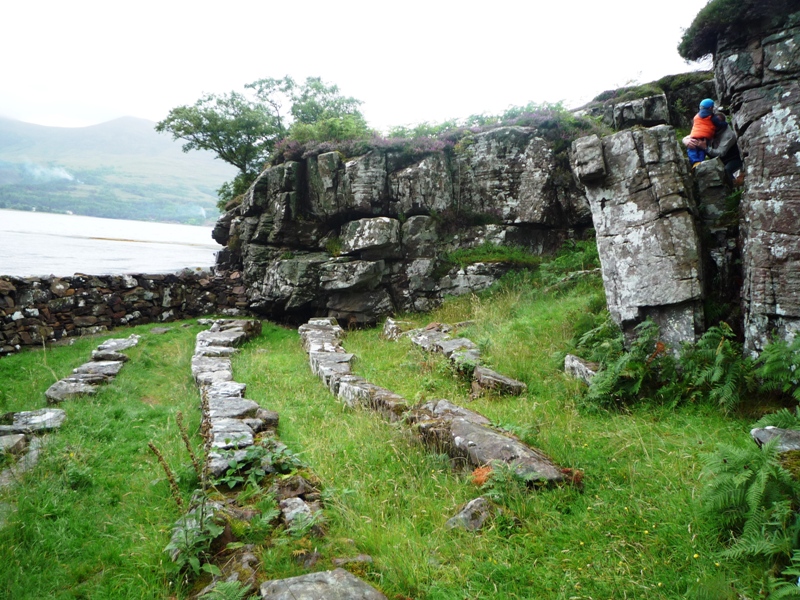
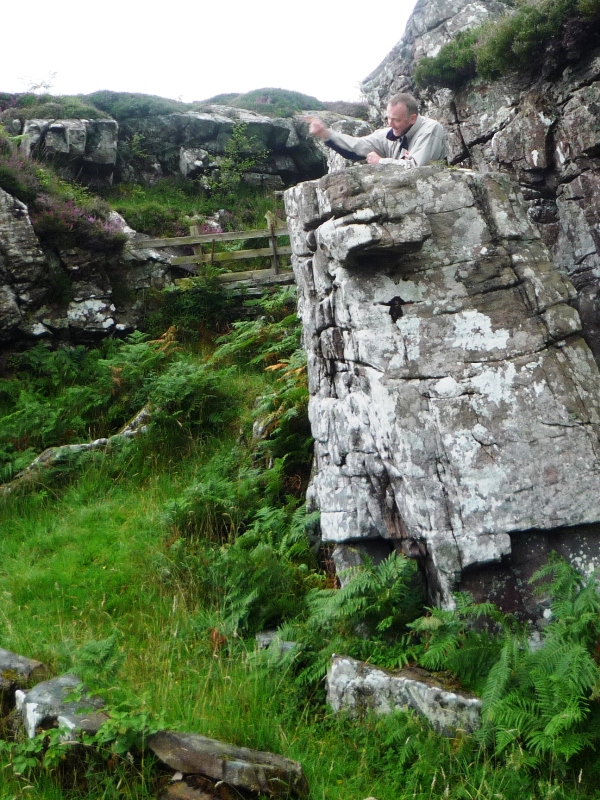
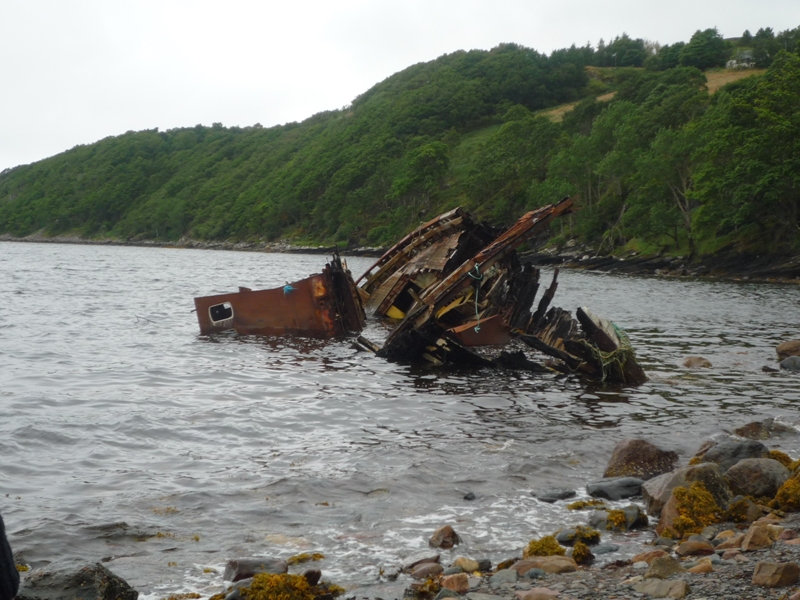
.JPG)
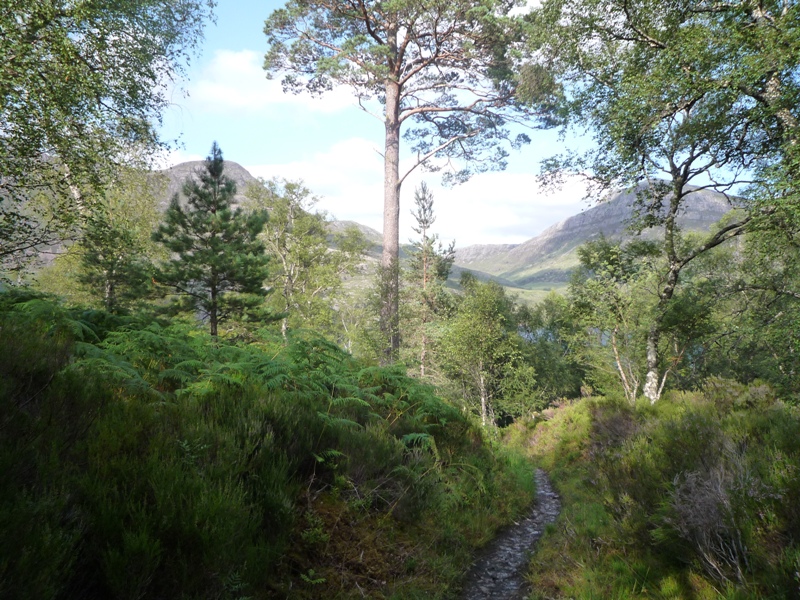
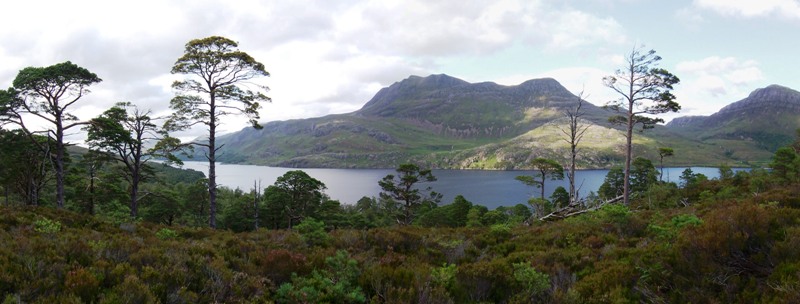
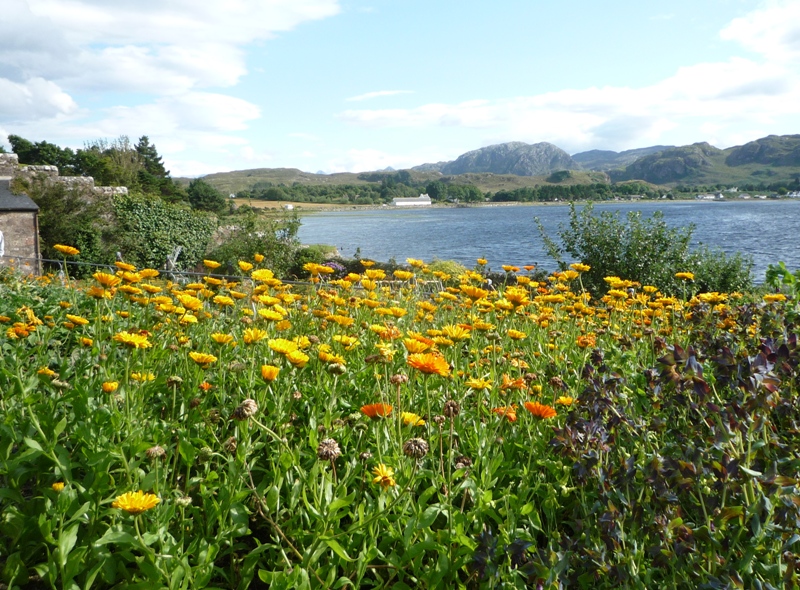
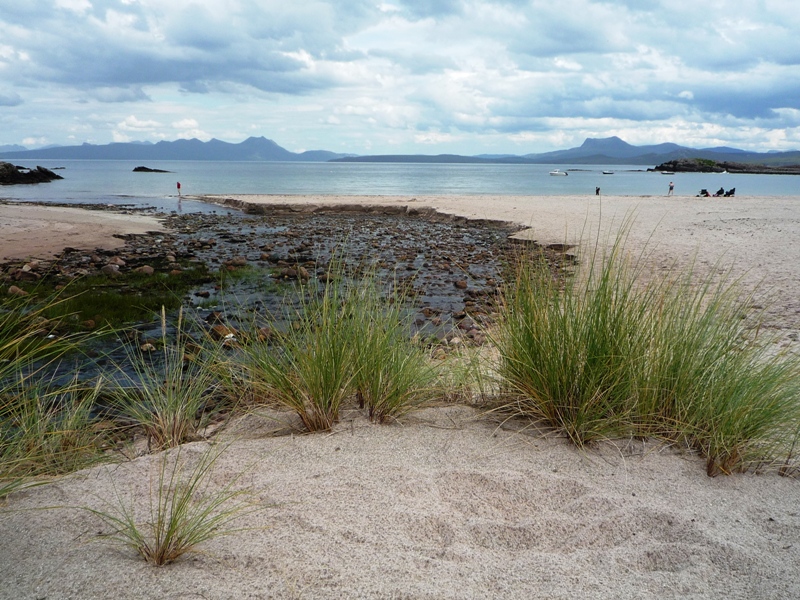
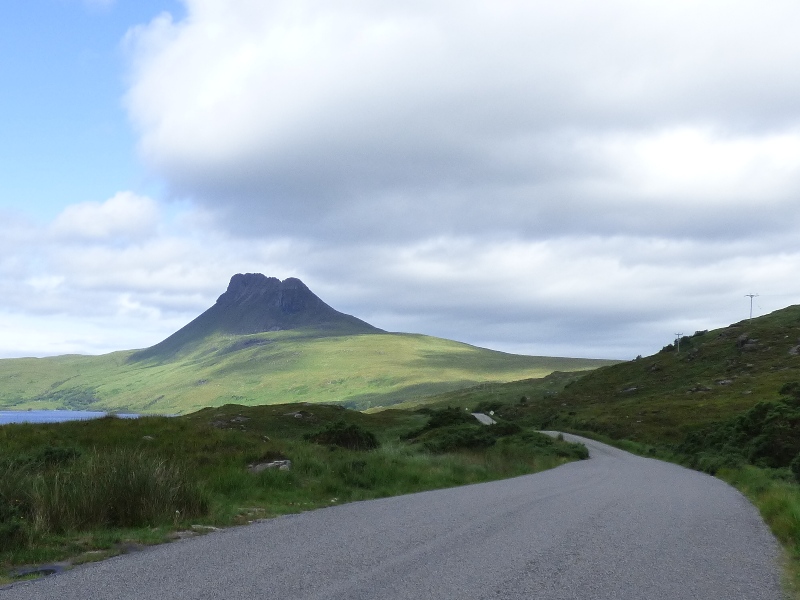
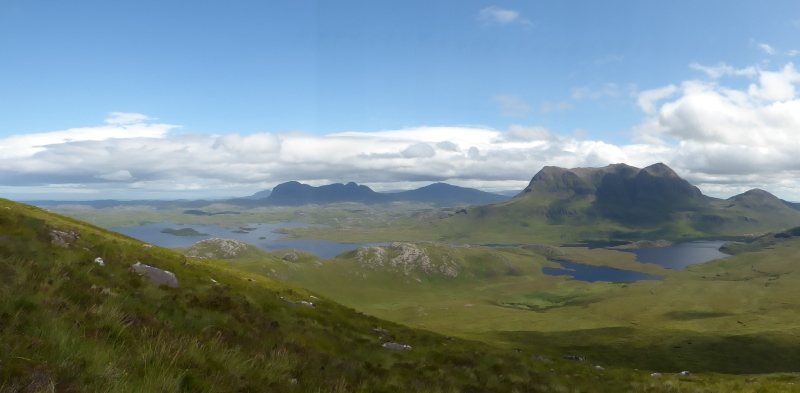
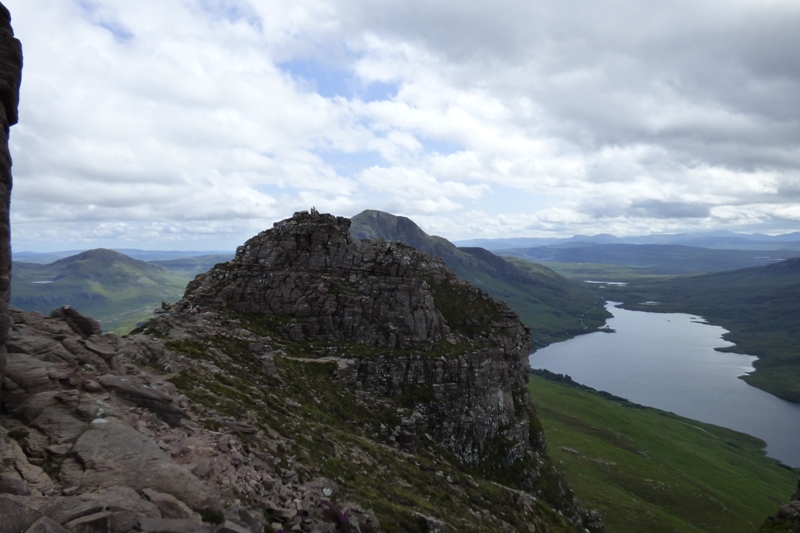
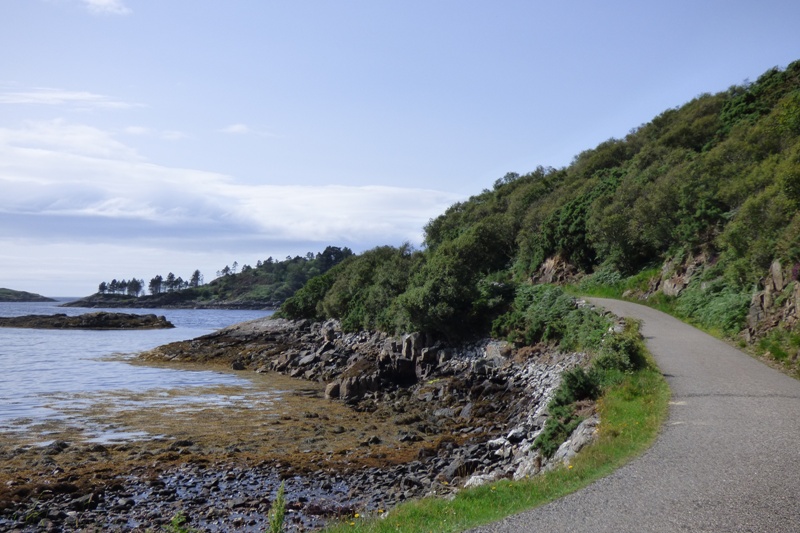
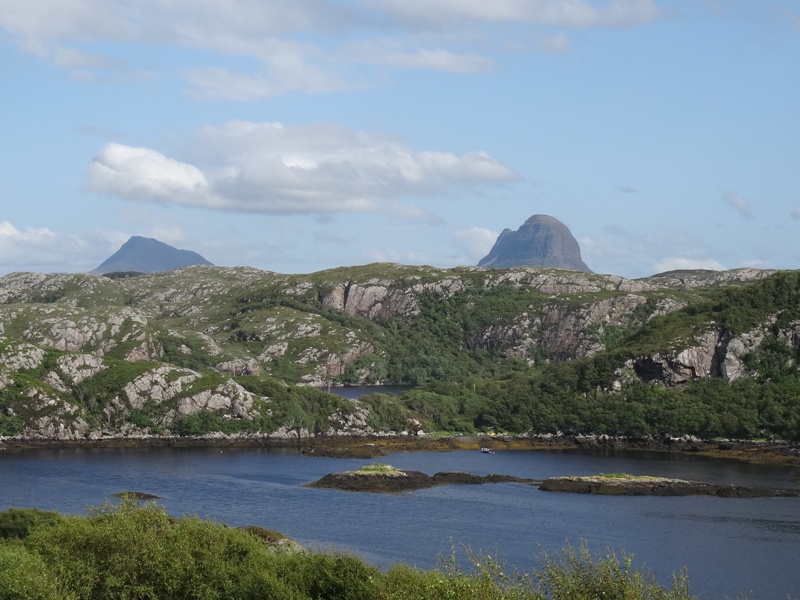
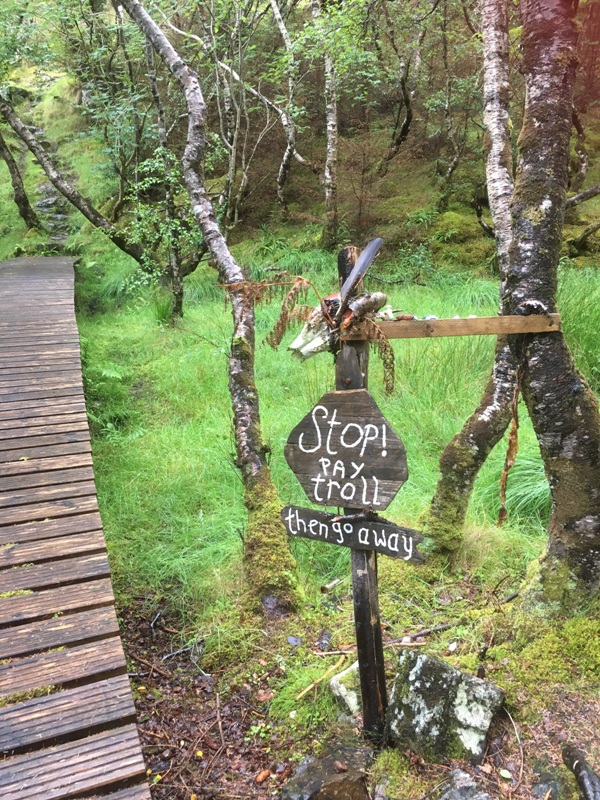
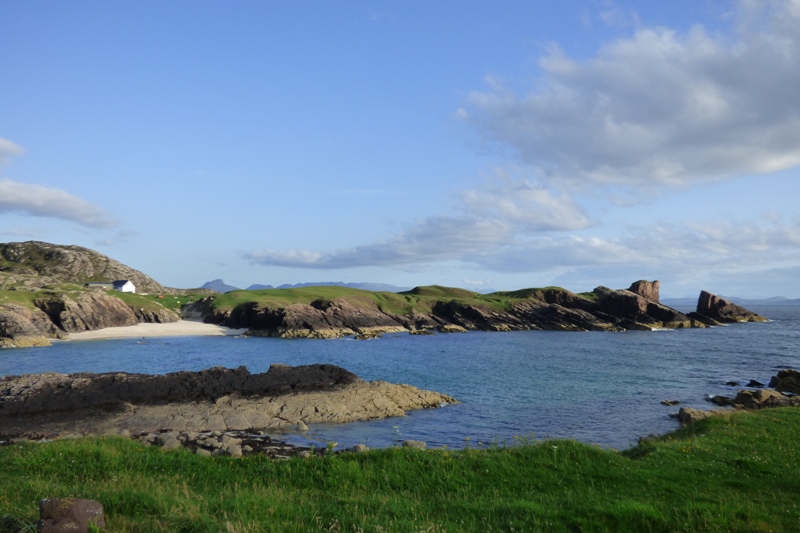

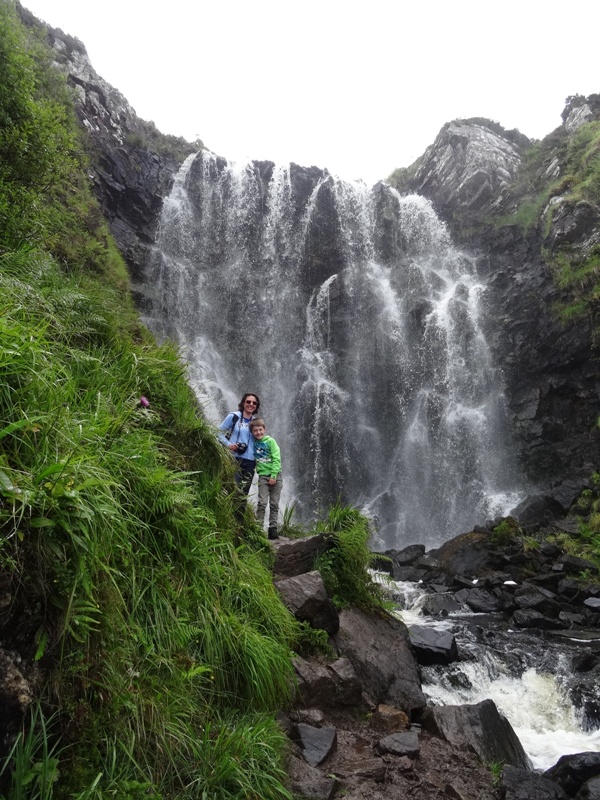
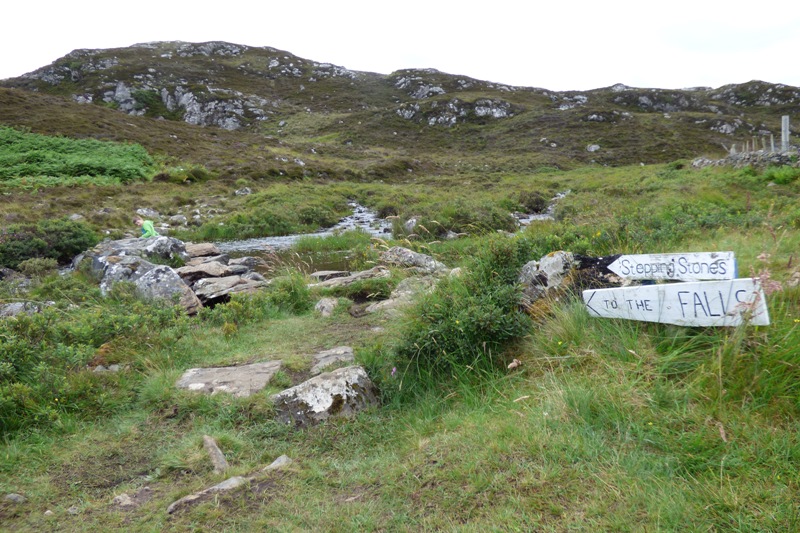
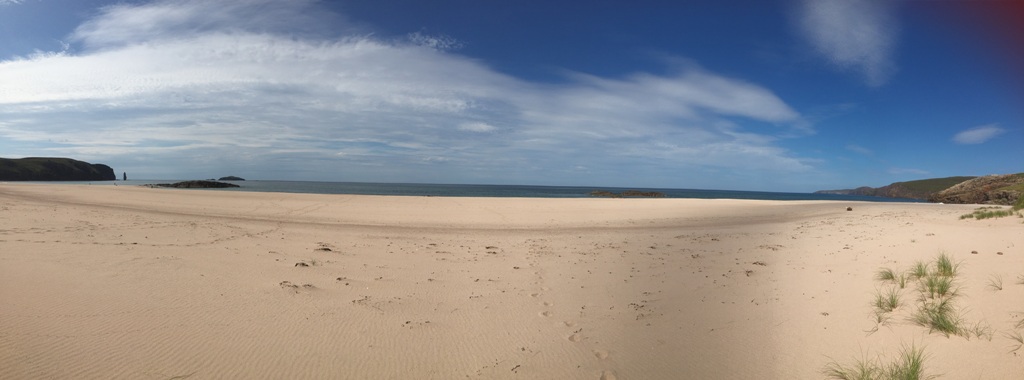
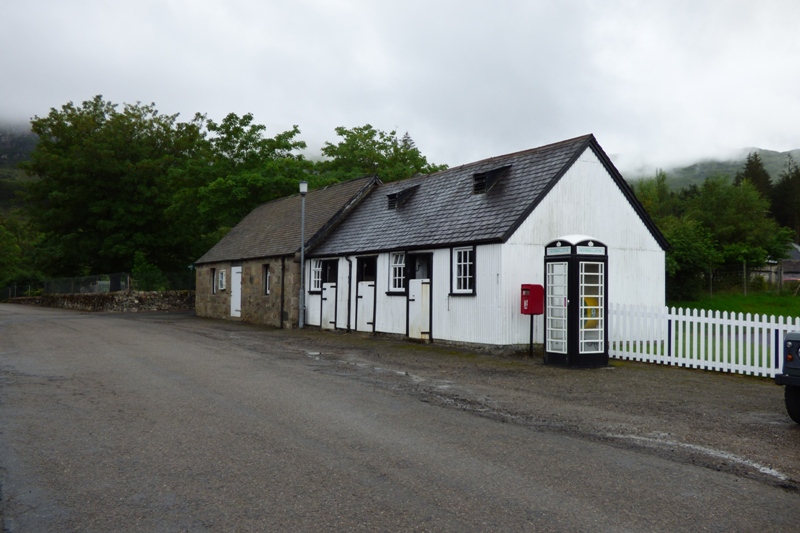
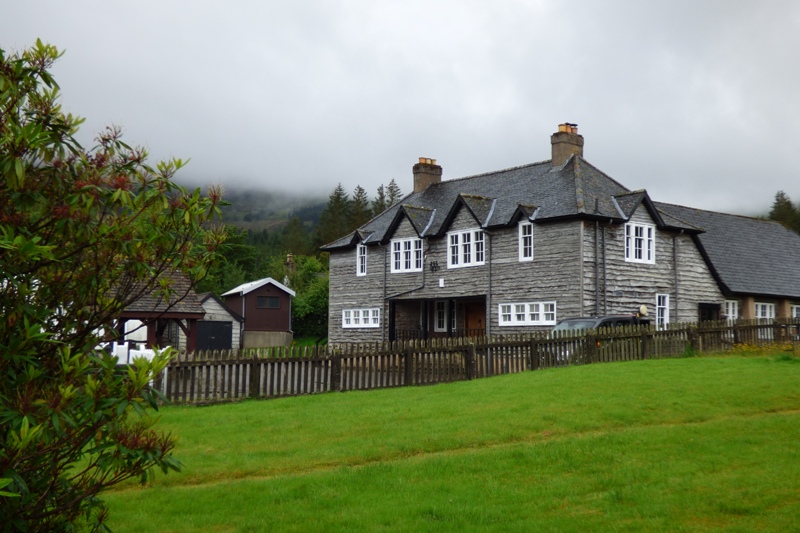
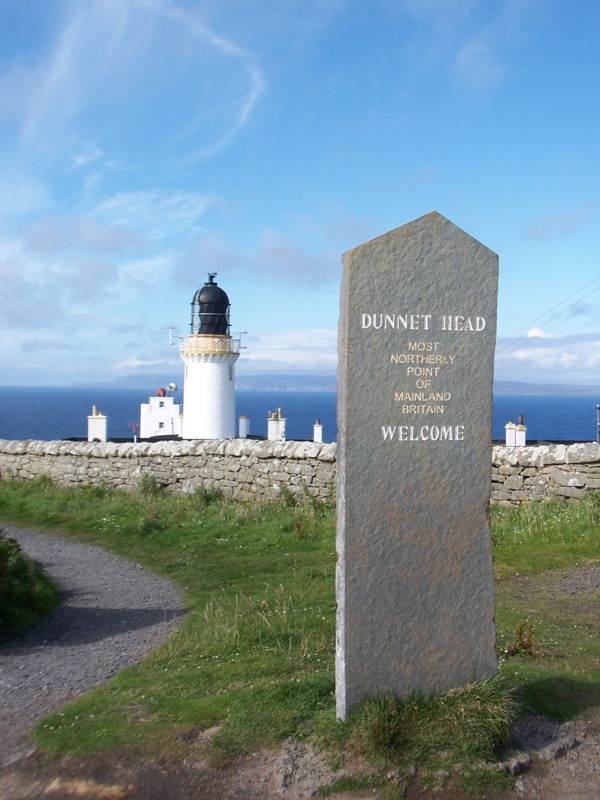
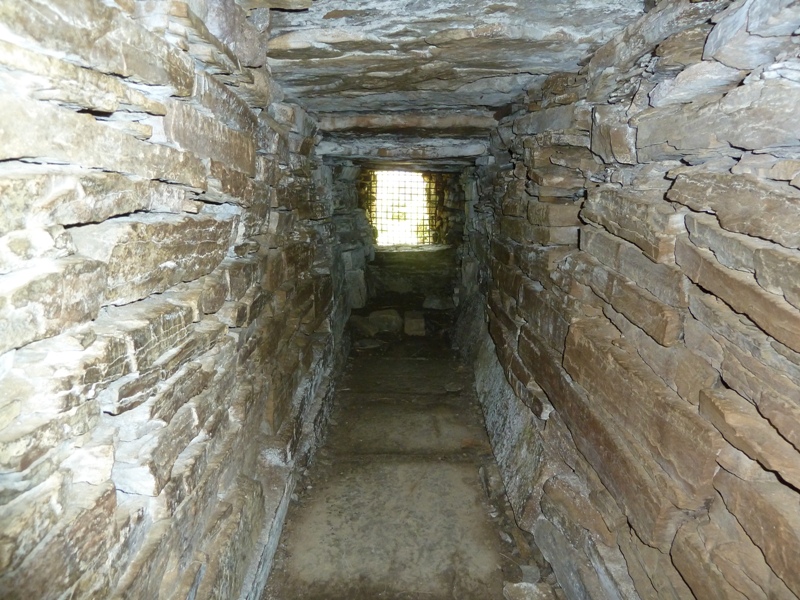
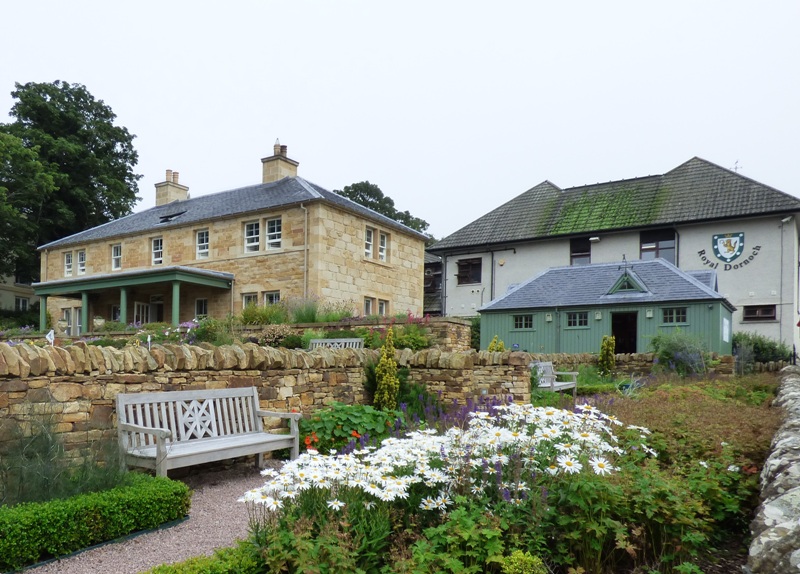
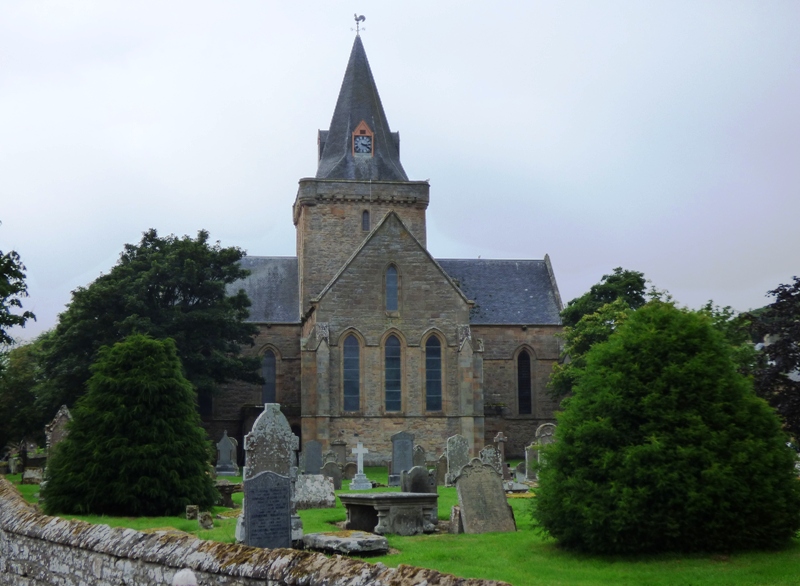
.JPG)
